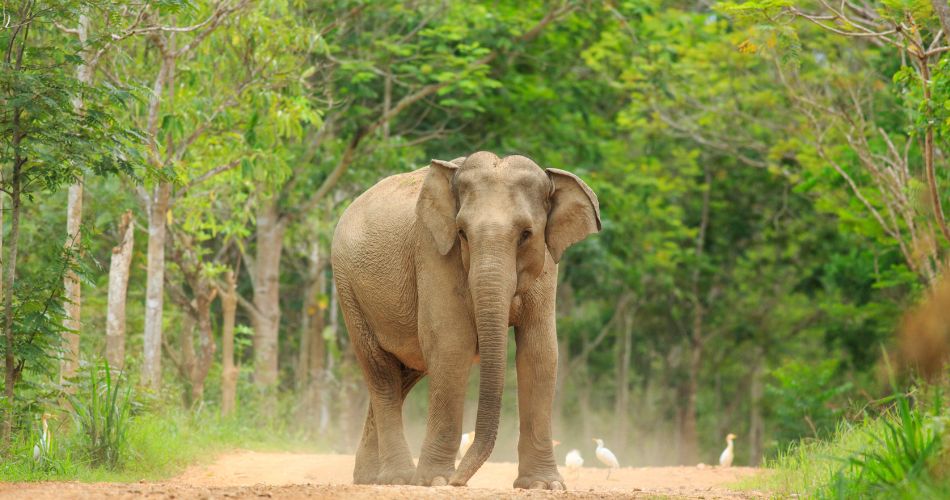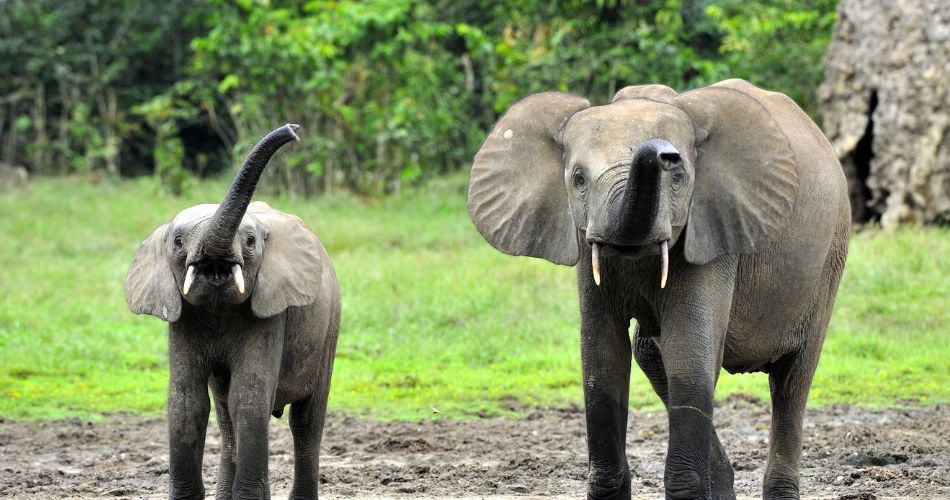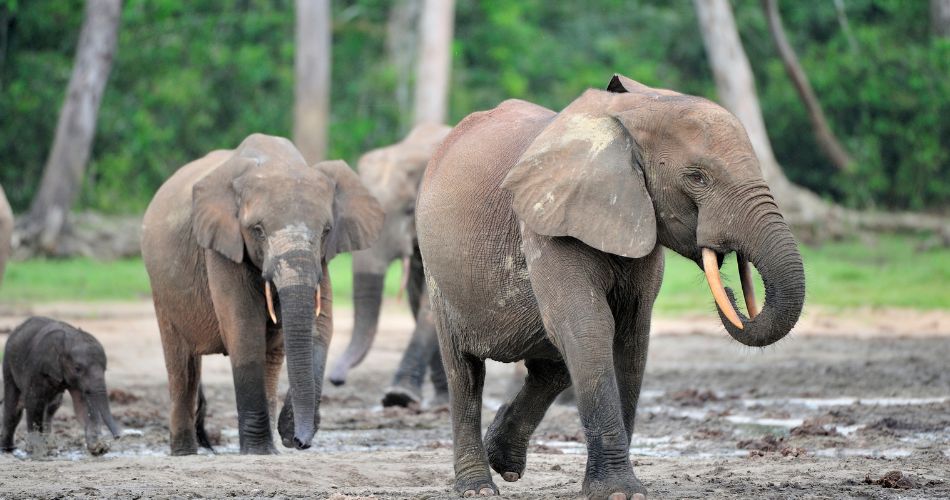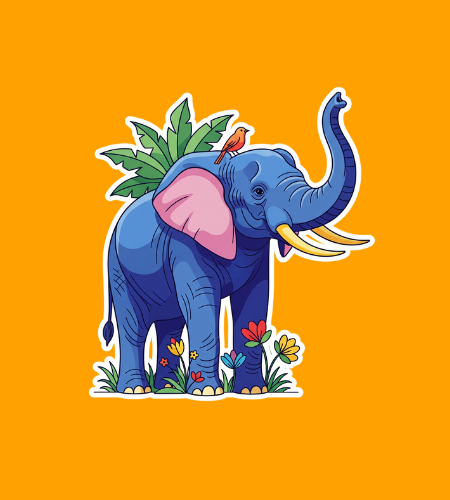World Elephant Day is celebrated each year on August 12, a global day dedicated to raising awareness of the challenges elephants face and inspiring action to protect these magnificent animals.
History of World Elephant Day
World Elephant Day was co‑founded on August 12 2012, by Canadian filmmaker Patricia Sims and Thailand’s Elephant Reintroduction Foundation, under royal patronage, launching the initiative in Bangkok to spotlight the urgent plight of both African and Asian elephants. 1
Since its first celebration in 2012, the campaign has grown into a global movement, partnering with over 100 conservation organizations and engaging millions of people supporting elephant welfare, habitat protection, and anti‑poaching efforts.
Why is World Elephant Day important?
At its core, this day brings global attention to the dramatic decline in elephant populations—African elephants have declined by over 60% recently, and Asian elephants remain endangered—primarily due to poaching, habitat loss, and human‑wildlife conflict.
World Elephant Day also personalizes conservation by championing the emotional lives of elephants, the sanctuaries that care for rescued individuals, and grassroots efforts that empower local communities to coexist with these animals. It’s a plea to treat elephants not as icons, but as part of our shared ecosystem with dignity and respect.
Some thoughts World Elephant Day inspires:
- elephants are gentle giants vulnerable to human greed
- they play a keystone role in their ecosystems
- their emotional and social lives deserve respect
- awareness can turn into real-world policy and protection
- conservation is about collaboration across borders
Fascinating Facts About Elephants

1. The Largest Land Animal on Earth
The African Savanna (or Bush) elephant (Loxodonta africana) holds the record as the largest land animal. Adult males — called bulls — can stand up to 3 meters (10 feet) tall and weigh around 6,000 kilograms (13,200 pounds). Some exceptionally large individuals can even exceed 6,800 kilograms (15,000 pounds). They reach full size at 35–40 years of age, which is over half their typical 60–70-year lifespan. Even newborn calves are impressive: at birth, they can weigh 120 kilograms (260 pounds) — roughly the weight of a large adult human. 2

2. Three Species, Distinctive Ears, and Unique Subspecies
There are three recognized species of elephant:
- African Savanna (Bush) Elephant (Loxodonta africana)
- African Forest Elephant (Loxodonta cyclotis)
- Asian Elephant (Elephas maximus)
African elephants have larger ears shaped partially like the African continent, while Asian elephants have smaller ears shaped like the Indian subcontinent. Their trunks also differ — African elephants have two “fingers” at the tip, while Asian elephants have only one.
Among Asian elephants, there are at least three subspecies: the Sri Lankan elephant, the Indian elephant, and the Sumatran elephant. The Borneo pygmy elephant is either a subspecies or a distinct population, and it’s the smallest elephant in the world.

3. Extraordinary Trunk Skills
An elephant’s trunk — essentially a fusion of its nose and upper lip — is one of the most versatile organs in the animal kingdom. It contains around 150,000 muscle units and no bones or joints. Trunks are used for:
- Sucking up and spraying water (up to 8 liters / 2.5 gallons at a time)
- Smelling, touching, and grasping objects
- Trumpeting and making other vocal sounds
- Breathing (including acting as a snorkel while swimming)
- Showing affection and communication

4. Tusks: Beautiful but Dangerous
Elephant tusks are actually enlarged incisor teeth, which appear around the age of two and grow continuously throughout life. They help strip bark from trees, dig up roots, and serve as formidable weapons in fights. In African elephants, both males and females usually have tusks, but in Asian elephants, only some males have large tusks; others have small “tushes” barely visible beyond the lip line. Sadly, the ivory trade has made tusks a deadly liability, leading to widespread poaching. 3
5. Thick Skin with a Cooling Advantage
Elephant skin is about 2.5 centimeters (1 inch) thick, but it’s full of folds and wrinkles that can hold up to 10 times more water than smooth skin — an adaptation for keeping cool. To protect against sunburn and parasites, elephants take frequent dust and mud baths, coating themselves in a protective layer.
6. Eating Machines
Elephants are herbivores that eat over 300 plant species, including grasses, leaves, fruit, bark, and roots. Depending on the season, they’ll also consume cultivated crops like bananas, sugarcane, maize, and citrus — often bringing them into conflict with farmers. An adult elephant can eat 100–150 kilograms (220–330 pounds) of food every day and spend up to three-quarters of its time feeding. 4
Their digestion is inefficient — less than 50% — meaning they produce large amounts of dung, which in turn helps fertilize the ecosystem.
7. Massive Water Needs
An adult elephant drinks 25–50 gallons (100–200 liters) of water daily, though this can double in hot or dry conditions. They often dig waterholes in dry riverbeds to access underground water, benefiting other animals in the process.
8. Fast-Developing Calves
A baby elephant can stand within 20 minutes of birth, walk within an hour, and keep up with the herd in just two days. Calves nurse for several years, consuming over four gallons of milk daily in early infancy.
9. Social Structures and the Role of Matriarchs
Elephant herds are matriarchal. The oldest female leads, guiding the group’s movements and ensuring access to food and water. A typical family unit consists of the matriarch, her daughters, sisters, aunts, and their calves. Males leave the herd around age 14 to join bachelor groups. Elephants live in fission-fusion societies, meaning group sizes and compositions change throughout the day.
10. Communication: From Trumpets to Vibrations
Elephants communicate through:
- Trumpet calls
- Low-frequency rumbles (inaudible to humans)
- Touch and scent
- Seismic vibrations detected through their feet and leg bones
They even purr like cats when content.
11. Intelligence, Empathy, and Memory
Elephants show remarkable problem-solving skills, self-awareness, and emotional intelligence. They help injured companions, comfort distressed herd members, and mourn their dead — touching and smelling bones, sometimes covering them with branches. Their exceptional memory helps matriarchs recall water sources and safe routes, even years later.
12. Physical Quirks of Elephants
- Elephants can’t jump.
- Their pulse is only 27 beats per minute (compared to a canary’s 1,000).
- Their intestines can be 19 meters (60 feet) long.
- They have eyelashes and sparse body hair.
- They can swim long distances, using their trunks as snorkels.
13. Longevity of Elephants
African elephants can live up to 74 years, while Asian elephants may reach 80 years in the wild. The oldest recorded elephant lived to 89 in captivity.
14. Conservation Crisis
In the past century, African elephant numbers have plummeted by around 90%, largely due to poaching for ivory. Today, only ~415,000 African elephants and 48,000–52,000 Asian elephants remain in the wild. Habitat loss, climate change, and human-wildlife conflict are major threats. Conservation efforts — including anti-poaching patrols, wildlife corridors, and even innovative “beehive fences” to deter elephants from farmland — are critical for their survival.
How to Celebrate World Elephant Day
Join the global effort by supporting organizations like the World Elephant Society, the Elephant Reintroduction Foundation, or the Sheldrick Wildlife Trust working to protect elephant habitats and reduce illegal trade. Your donations amplify education, sanctuary development, and rescue initiatives.
Share facts, stories, or artwork on social media using #WorldElephantDay, attend virtual talks or conservation webinars, and advocate for elephant-friendly policies and ethical tourism—especially when visiting sanctuaries or reserves that treat elephants with care.
Ways to take action:
- donate to trusted elephant conservation organizations
- share educational content and elephant stories online
- attend talks, webinars, or zoo events with elephant themes
- encourage habitat protection through advocacy or petitions
- choose tourism experiences that avoid captive exploitation
World Elephant Day Dates Table
| Year | Date | Day |
|---|---|---|
| 2025 | August 12 | Tuesday |
| 2026 | August 12 | Wednesday |
| 2027 | August 12 | Thursday |
| 2028 | August 12 | Saturday |
| 2029 | August 12 | Sunday |
- https://worldelephantday.org/[↩]
- https://www.wwf.org.uk/learn/fascinating-facts/elephants[↩]
- https://elephantconservation.org/about-elephants/25-things-to-know/[↩]
- https://www.ifaw.org/international/journal/elephant-facts-statistics[↩]
Subscribe to our newsletter and never miss a holiday again!

